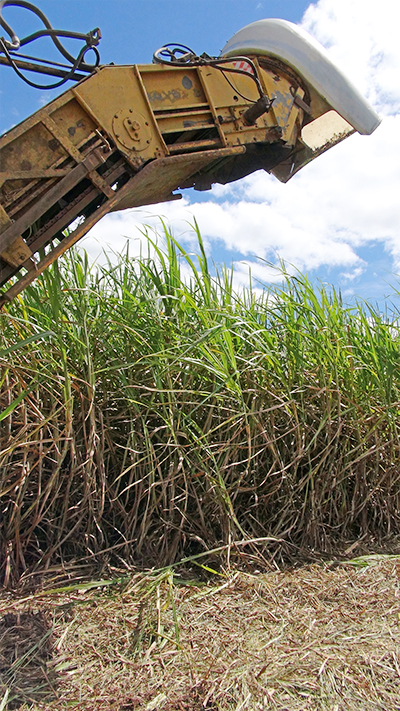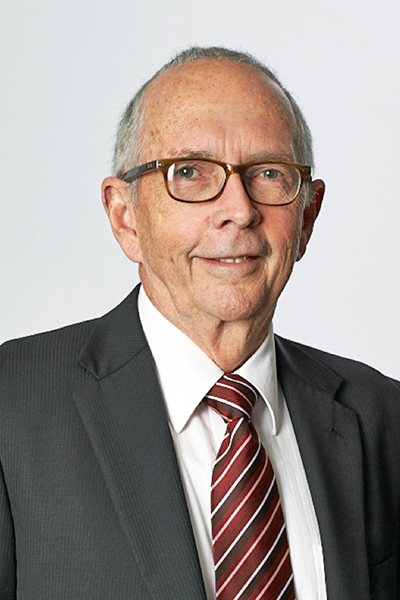Integrated Food and Energy project re-defines Northern Australia development
By Mike Sullivan >>
AN INTEGRATED food and energy agribusiness project, storing overflow water from abundant Cape York river systems, looks like trailblazing a pathway to sustainable development for Northern Australia.
The Etheridge Integrated Agriculture Project (EIAP), based around the Einasleigh and Etheridge Rivers integrates deep lake water storage with cattle pastures, sugar, guar bean and stock feed production, electricity generation from bagasse, and aquaculture. 
The project is the brainchild of a group of Queensland business leaders: chemical engineer and manufacturing and resources specialist Stewart Peters; water harvesting specialist John Grabbe who was joint managing director of Australia’s largest private irrigator Cubbie Group Ltd; infrastructure finance specialist and InterFinancial director David Hassum; and former Queensland Treasurer and Macarthur Coal chairman Keith De Lacy.
Their company, Integrated Food and Energy Developments (IFED), is currently raising funds to commence work in 2017.
If their EIAP development is successful – and Mr De Lacy believes with its versatility in production and foundation of sustainability it is probably the most bankable agribusiness project in Australia – then it will be a model for further development in Northern Australia.
“Developing Northern Australia has been a challenge for the last 100 years,” Mr De Lacy said. “There has been some major development in resource projects from time to time. The beef industry, of course, is spread right through Northern Australia. On the coast there is the sugar industry, other horticultural industries as well as tourism.
“But most of Northern Australia is poorer now and has less population than what it had 50 or 100 years ago. Therein lies the challenge.”
ETHERIDGE INTEGRATED AGRICULTURE PROJECT (EIAP)
The Etheridge Integrated Agriculture Project is founded on 65,000 hectares of irrigated cropping on the Far North Queensland in the Etheridge Shire, in the southern Gulf country, with cattle on a further 200,000ha and aquaculture incorporated. It is underpinned by the development of a series of gravity flow deep water lakes which store water away from the river system itself. In total, there will be 18,000ha devoted to deep water storage, minimising evaporation.
“This, in my view, is the way to get high intensity agricultural projects going in Northern Australia,” Mr De Lacy said.
“We are going to harvest mostly from the Einasleigh River (north of the Etheridge River) but it flows into the Gilbert, so it is part of the Gilbert system. There is a fairly natural water storage area quite close, so it’s just gravity diversion. The first storage is 1.6 million megalitres, which is about the size of Wivenhoe and has an average depth of 14 metres which makes it highly efficient. We will gravity feed it down to a smaller one in the cropping area which has got 400,000 megalitres. So that is about 2 million megalitres we would store.” 
“On 100 years of river flow data, we would have got a full crop every year. So it is 100 percent sustainable. That’s because we are storing about four times what we need.”
The products of the EIAP are also an innovative mix of sugar, guar gum (from the guar bean legume), meat and electricity from the sugar bagasse.
The project generates its own power and exports electricity to the grid. There is also a supply of sugar for possible ethanol production.
Mr De Lacy said guar is used as a food thickener and also has a special use in the shale fracking process. “That sort of underwrites its price and volume,” he said.
The EIAP will also produce about 400,000 tonnes of stock feed a year.
“Which then means we can run a meat processing plant because we can feed the stock in the off-season,” Mr De Lacy said. “There is a million cattle in that region, but they all lose weight in the off season, so they stop going to abattoirs, and because abattoirs only work eight months of the year they are never viable. With our stock food we can get 12 months supply.
“We produce all of our own electricity and some – it’s all bagasse, it’s all coking. We justify the capital spend on the co-gen (power co-generation) by what we can sell into the grid. The rest of it we use ourselves – it is effectively free to us.”
WASTE-NOT WANT-NOT
Another EIAP innovation is the utilisation of lake-fed ponds for the production of redclaw, a crayfish native to the region.
“But we also found that the wastewater from our processing plants, the sugar mill and the abattoir and so forth, we feed in to an anaerobic digester, which creates methane, which is energy, but what is left in the water is a sort of a carbohydrate enzyme which is food for redclaw,” Mr De Lacy said.
“So we effectively feed them for free. We are only using the water one more time and, when they are finished with the water, we use it for irrigation and they actually add nutrient to the water which helps the irrigation as well.
“We did a quick exercise on that and we would produce 7500 tonnes of redclaw, which is worth $100 million. And that is just an add-on. As is the abattoir.”
Because of the backgrounds of the IFED founders, the plan to integrate processes, as they flowed from having a sound water supply, drove the decisions on the eventual production mix.
“The reason our project works so well is its scale to start off with,” Mr De Lacy said. “You have got to be big enough to do your own processing, in those isolated regions.
“Our project is a billion dollars of production each year and 1000 employees.”
IFED has secured agreements with the four required properties in the region and is concurrently conducting both environmental impact studies and fund raising.
“The environmental assessment process is the main part, to ensure sustainability,” Mr De Lacy said.
“We are confident, as we are only proposing to use only 10 percent of the river flow. We will be subject to the most rigorous environmental assessment program that any project has ever been subjected to. But we are confident about it. We have done a lot of work and a lot of science on it.”
As a showcase for what might be achieved in terms of sustainable development in Northern Australia, the project has attracted initial support from both the Federal Government and the Queensland Government.
“In round terms, the value of our production is around $1 billion (a year), and our profit each year is around $350 million, so there’s $600 million in consumables – labour, consumables, services, what-have-you – in Northern Australia,” Mr De Lacy said. “So everybody benefits.”
Mr De Lacy said the major advantage needed for successful agriculture in Northern Australia is “scale”.
“You can produce so much biomass in the tropics – you have got masses of water, sunshine, soil – which is really stored energy,” he said. “That overcomes a major economic disadvantage of being out there, when you have got all of your own electricity.”
What Mr De Lacy and the IFED team hope is that their Northern Australia project will be a catalyst for other intelligent sustainable developments that will help the region realise its true potential.
Mr De Lacy said the old ways of developing the North were ripe for failure.
“The old system was government did the water infrastructure, then they had farmers, a whole range of farmers, usually supervised by government, resuming land and cutting it up. And then you had separate processing,” Mr De Lacy said.
“So you really just did not have that integration that we believe is necessary. For example, in the Ord, the price of sugar went down and the farmers started growing something else. So how does the mill carry on? Whereas what we are talking about is one owner of the water, the farming and all the infrastructure.
PLUGGING IN AGBOTS
Mr De Lacy said the EIAP was planning to take advantage of the latest technologies from day one – including keeping an eye on agricultural robot systems being developed in Queensland by QUT and Swarm Farm.
“(Agricultural robots) that go along and zap a feral plant with insecticide, or microwave or whatever, and just get the one that is growing, that’s all. We would be looking at those,” Mr De Lacy said.
“And drones … they are using those now in the cattle industry. They fly around the fence and just photograph if the fence is good … but we would have other uses for those too. And all automation as well.
“Starting from scratch, you’ve got a great opportunity. I keep saying to our mob, you have got one chance to make this really efficient. It’s the first one.”
“I reckon we will grow sugar cheaper than anywhere in the world, simply because of technology and our production systems. I think our production will be just extraordinary.”
- A more detailed story on the Etheridge Integrated Agriculture Project will appear in the next edition, Business Acumen #85, in part two of our Special Report: Northern Australia.
ends

 How to resolve AdBlock issue?
How to resolve AdBlock issue?